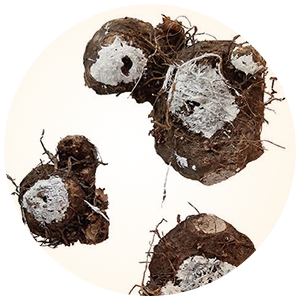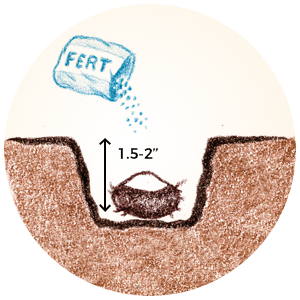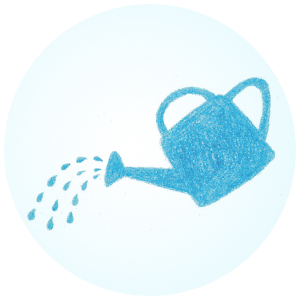Growing Caladiums from Bulbs
You might like to grow caladiums from bulbs rather than buying sprouted caladium plants if you enjoy the experience of growing things from seeds or roots, and you’re not looking for instant impact. Follow these tips for growing your caladium bulbs.

Choosing and Receiving Your Bulbs
SIZING: Caladium bulbs are graded into two sizes: #1 and jumbo. Choose the smaller #1 size bulbs if your growing season is long and they will have plenty of time to mature. Choose jumbo bulbs if your growing season is shorter or you want to grow larger plants faster.
TIMING: If your caladium bulbs arrive early in the season, open the box and allow the bulbs to breathe. Store them in a well-ventilated area above 65°F. Once the air temperature outdoors is consistently at least 60°F and the soil temperature is at least 65°F, it is safe to plant your caladium bulbs outside.
You could start to see foliage emerge from your caladium bulbs in as little as 3 weeks after planting if you start them in the warmer part of the season once the soil temperature rises above 65°F. When starting them earlier in the spring indoors, expect to see foliage in about 6-8 weeks, depending on the variety. After 9 weeks, the plants should be fully leafed out for the season.

Planting Your Bulbs
SOIL: Caladiums need well-drained soil to prevent their bulbs from rotting. Use a standard potting mix, like the one you use for growing annuals, when planting your caladium bulbs in containers.
WHITE SIDE UP: All Heart to Heart caladium bulbs are painted white on the top. This is to make sure you plant them right side up—a critical step. You should see the white paint as you are sinking them into the soil.
PLANTING DEPTH: Sink the bulbs about 1½ to 2″ below the soil surface when planting. This will allow enough room for their roots to grow and won’t delay the emergence of the new leaves.
SPACING: Plant your #1 size caladium bulbs about 8-10″ apart, or two bulbs per square foot. If you are using the larger jumbo size bulbs, you’ll only need one per square foot. Spacing them closer together will create a denser planting, especially in areas where the growing season is shorter and they are being grown as annuals.

Caring for Your Caladiums
SUNLIGHT: All caladiums grow well in part shade (4-6 hours of sun). However, some varieties can tolerate full sun (6+ hours) in most parts of the country and others can tolerate full shade (<4 hours). The plant label will tell you how much sun the variety you select can handle.
WATERING: When you first plant your caladiums, keep the soil moist but not soggy. Keep an eye on those growing in full sun because the soil will dry out more quickly there. Once the plants are rooted in and flourishing in your garden, they will only need average amounts of water. Early morning is the best time to water caladiums.
HEAT: Caladiums are tropical plants that love the heat, even in southern climates. Their most active growth occurs during the warmest part of the season. That’s why it is important to wait to put them outside until the air temperatures are consistently at least 60°F and the soil temperature is at least 65°F. Caladiums can get stunted or may even stop growing completely if they are moved outside when it is too cool.
FEEDING: Caladiums don’t need as much fertilizer to stay happy compared to “hungry” flowers like petunias. When you plant them, mix some Proven Winners Premium continuous release plant food into the soil. Follow up with our water soluble plant food once per month.
PESTS: Caladiums are generally considered to be quite pest and disease resistant. Most problems that occur are the result of overwatering which can cause the bulbs to rot, too much sun or too much fertilizer. Though caladiums are considered to be moderately resistant to deer and rabbit browsing, they may nibble the foliage if there is no other suitable food source nearby.